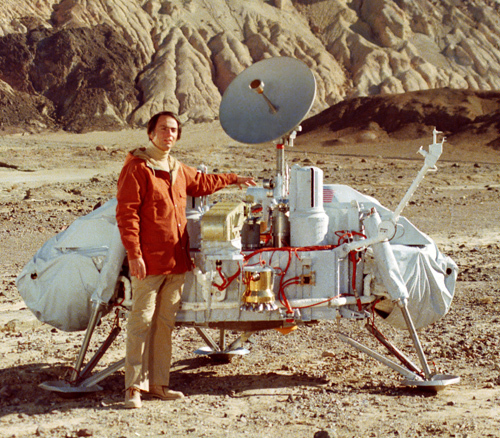By Joe DeMartino
It is a unique form of heartbreak for a prophet to be denied the culmination of his visions.
For us, Carl Sagan may have been born at exactly the right time. He was six years old at the 1939 World's Fair, where he found both science and television waiting for him, fabulous and fascinating. The young Sagan may have seen the future for the first time at that fair, as the organizers buried a time capsule, not to be opened for a thousand years or more. A sarcophagus for all our dreams and cares, put from our sight so we could tell of ourselves long after we turned to ash.
So Sagan became a scientist. He learned of the scale of things -- that a look at the night sky revealed thousands and thousands of stars, far out of out of our reach, but beautiful beyond measure in their totality. The Earth yielded up its mysteries for thousands of years, but it was beginning to become miserly. We would eventually strip this world bare of knowledge. We would need others.
To get to these worlds, we made a thing called NASA. Sagan was in on NASA from the ground floor. He helped send men to the moon and back. He helped create robots which would be our eyes and ears on Mars. He put a map to the Earth on probes called Voyager and sent them on wildly differing trajectories out of our solar system. There are golden records aboard each probe. Sagan put the sounds of Earth on them -- children laughing, volcanoes erupting, Mozart and Chuck Berry and Blind Willie Johnson. A Latin invocation: Salvete quicumque estis; bonam ergo vos voluntatem habemus, et pacem per astra ferimus.
Greetings to you, whoever you are; we have good will towards you and bring peace across space.
Sagan and NASA launched the Voyager probes in 1977. They've just recently reached the termination shock, where the solar wind drops to subsonic speeds and the Sun's hold on its wayward children is at its last tenuous measure. They're the first time capsules we've made intended for alien eyes.
The pace of exploration slowed down. Even if we wanted to go the moon these days, we would need to restart the entire program from scratch. We climbed one mountain and saw before us an endless range of others, each higher and more remote than the next, and instead of steeling ourselves for the next climb, we built a shack in the valley. Too dangerous and too expensive. Best to stay home.
For a man whose gaze seemed to be permanently tilted towards the stars, this must have been endlessly frustrating. Carl Sagan would never travel to the stars. There was a future that he could see in his mind's eye, clear as day, where atomic rockets brought humanity out of its cradle to witness wonders, but it would be denied to him.
There was, however, one thing he could do about it. Sagan was a very good scientist, but his strength seemed to be more in talking about it than actually practicing it. He had a kind of sonorous glee about stars and physics that his mobile and expressive face did nothing to hide. It made the impenetrable and intimidating facts of the universe seem like they were just beyond the next hill. Sagan couldn't see these things up close, but he could set us on the path. He started taking interviews. He wrote books. He had the idea for a TV series that would present space in all its majesty, that would make it so appealing that we could do nothing but strive for it.
In the first episode of this series, called Cosmos: A Personal Voyage, Carl Sagan travels through space in a spare but powerful ship. Though there may be as many as half a trillion galaxies, each containing half a trillion stars, plus uncountable phenomena ranging from mundane comets to black holes which break the laws of physics like twigs, so much of space is emptiness. This will not suit the Sagan we see in Cosmos. He flits from pulsar to quasar to supernova, his ship making a mockery of light-years. He wants to see it all. He wants us to see it all with him.
